


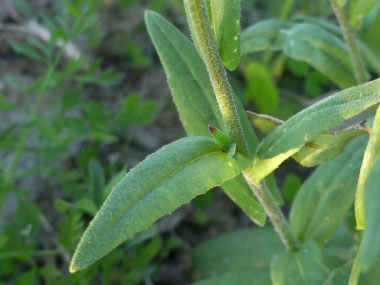
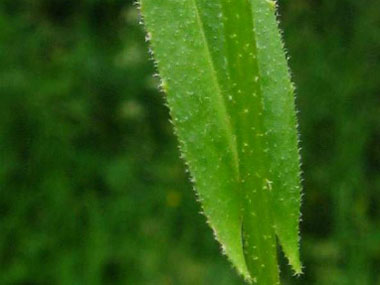
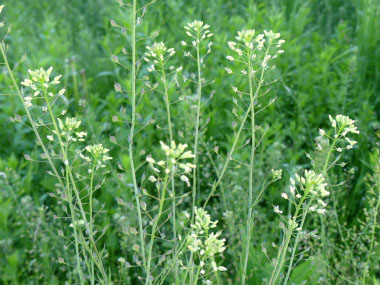
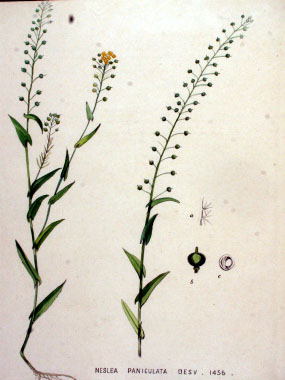
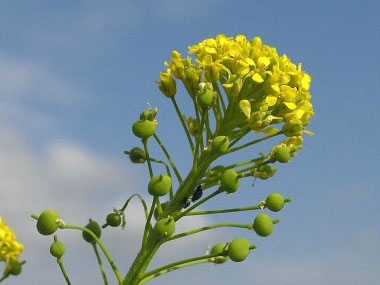
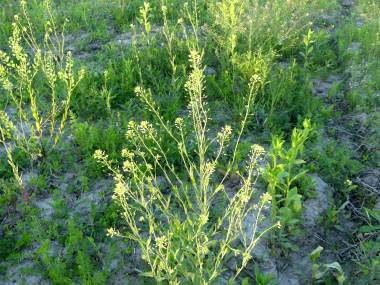
To support our efforts please browse our store (books with health benefits, etc.).
The ball mustard is an annual plant in the mustard (Brassicaceae) family that germinates in the autumn months. It forms a basal rosette of leaves throughout autumn then flowers early spring. They die off in the heat of the summer. Ball mustard weeds generally look very similar to other mustard plants, except the seeds are in a ball-like pouch.
Distinguishing Features
Ball mustard resembles small-seeded false flax, in habit and appearance, but can be distinguished from it and other members of the mustard family by the combination of its bright yellow petals, its clasping auriculate leaves, the rough texture produced by the stellate hairs on its stems
Flowers
The flowerhead is a slender raceme that is initially dense then elongates. Flowers borne on slender stalks. Flowers are yellow with the petals having a rounded tip. Flowers in May/June.
 Fields
of Nutrition has medicinal benefits and vitamin/mineral content of Ball Mustard.
Fields
of Nutrition has medicinal benefits and vitamin/mineral content of Ball Mustard.
Leaves
Leaves occur alternate. They have a pinnate leaf venation, are oblong, with a sagittate leaf shape. Forms a rosette at base. Leaf blades are oval. Leaf surface is somewhat hairy.
Height
Leaves occur alternate. They have a pinnate leaf venation, are oblong, with a sagittate leaf shape. Forms a rosette at base. Leaf blades are oval. Leaf surface is somewhat hairy.
Habitat
Found in disturbed areas, waste areas, farms, fields, and prefers sunny locations. This plant grows throughout Canada, most of the northern and some central states, Europe, Australia and some areas of Asia, Africa and South America.
Edible Parts
Leaves are edible.
Winter Survival Food Handbook

PDF Plant Magazines
Types of Wild Food
Geographic Zones Seasons
Disclaimer
EdibleWildFood.com is informational in nature. While we strive to be 100% accurate, it is solely up to the reader to ensure proper plant identification. Some wild plants are poisonous or can have serious adverse health effects.
We are not health professionals, medical doctors, nor are we nutritionists. It is up to the reader to verify nutritional information and health benefits with qualified professionals for all edible plants listed in this web site. Please click here for more information.
Why Edible Wild Food?
- Food costs are rising
- Free, wild food is readily abundant
- Wild food adds nutrition to your diet
- Wild food can help treat various medical conditions





